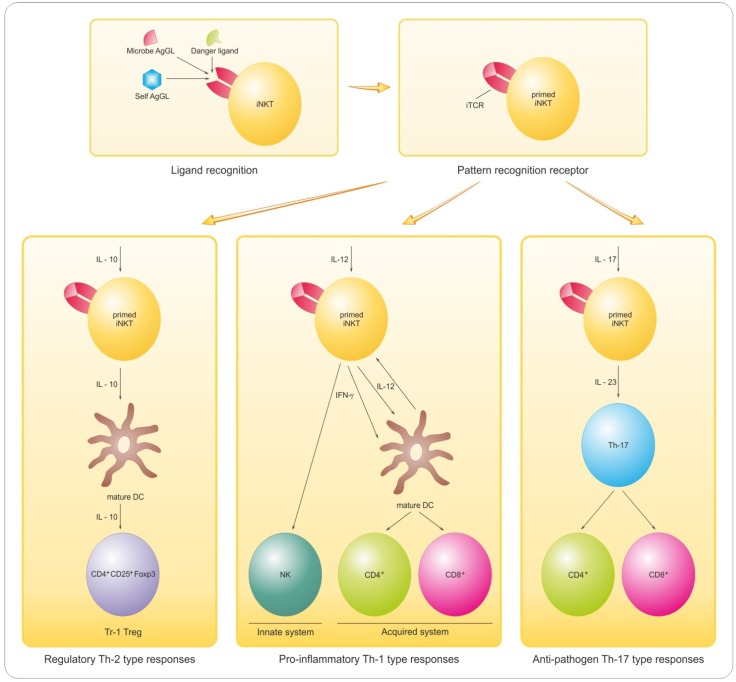Figure 5.
INKT cell-mediated immune responses (IR). Different antigenic GLs: microbial GLs; danger ligands; self antigens (Ags) compete for binding to iTCR; a pattern recognition receptor (PRR). Recognition is for different lipids—e.g., GLs, PLs and IR can be to microbial GLs (usually with high affinity) and overlap IR to self Ags (weaker affinity). The iNKT is (1) primed by the GL/iTCR/CD1d receptor complex and (2) responds according to environment, mainly cytokines-dependent with diverse outcomes: (i) pro-inflammatory (Th-1 type responses), (ii) regulatory (Th-2 type) or (iii) anti-pathogen (Th-17 type) as shown for IL-12 for iNKT pro-inflammatory functions; for an IL-10-driven response generating regulatory Tr1 Treg (e.g., CD4+CD25+Foxp3) and also anti-pathogen activity triggered by IL-17 and IL-23. From Hogan et al. [210] with permission of OMICS Publishing Group.

